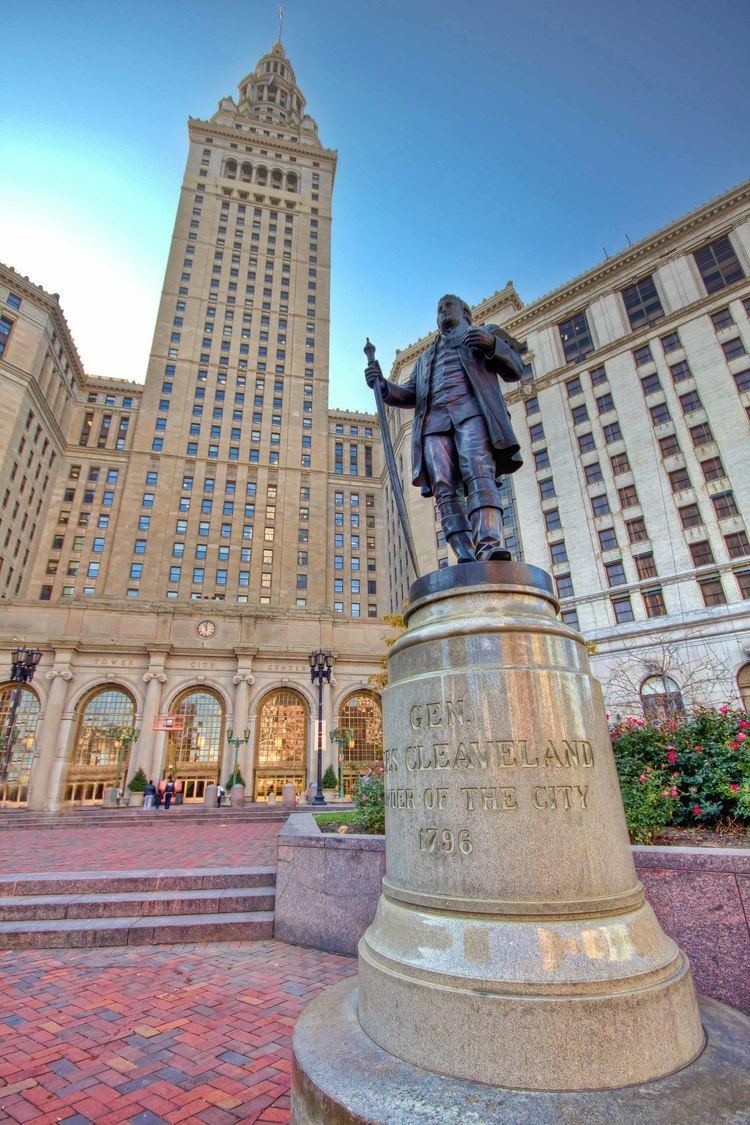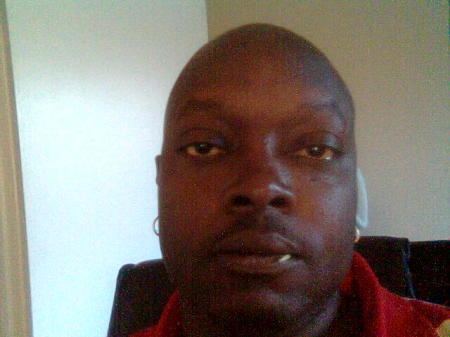Name Moses Cleaveland | Education Yale University | |
 | ||
Similar People Grover Cleveland, Euclid, Cleveland Torso Murderer | ||
The history of Cleveland’s Public Square
Moses Cleaveland (January 29, 1754 – November 16, 1806) was a lawyer, politician, soldier and surveyor, from Connecticut who founded the U.S. city of Cleveland, Ohio, while surveying the Western Reserve in 1796.
Contents
- The history of Clevelands Public Square
- Moses Cleaveland tree comes down
- Early life
- Militia career
- Founding of Cleveland
- References
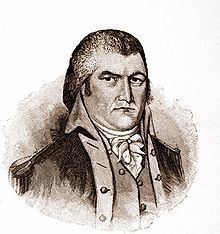
Moses Cleaveland tree comes down
Early life
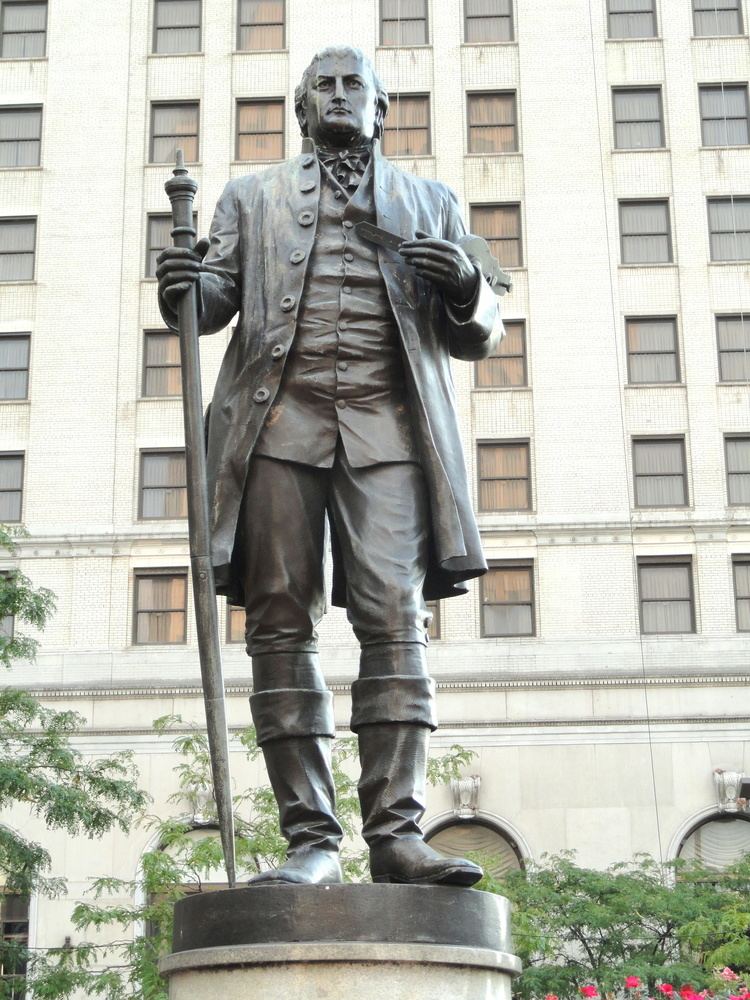
Cleaveland was born in Canterbury, Windham County, Connecticut. He studied law at Yale University, graduating in 1777. That same year, with the American Revolutionary War in progress, he was commissioned as an ensign in the 2nd Connecticut Regiment of the Continental Army. In 1779 he was promoted to captain of a company of "sappers and miners" (combat engineers) in the newly formed Corps of Engineers. He resigned from the army on June 7, 1781 and started a legal practice in Canterbury.
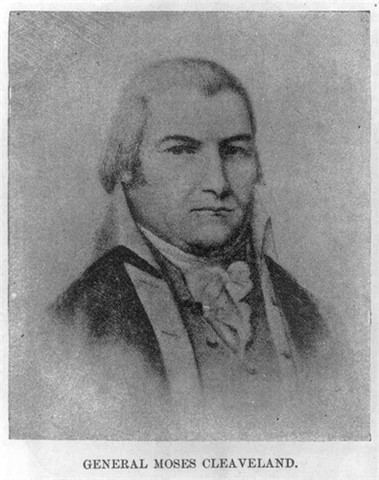
As a Freemason he was initiated in a military lodge and then he became W. Master of Moriah Lodge, Connecticut.
Militia career
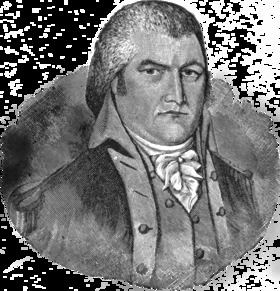
Cleaveland was known as a very energetic person with high ability. In 1788, he was a member of the Connecticut convention that ratified the United States Constitution. He was elected to the Connecticut General Assembly several times and in 1796 was commissioned brigadier general of militia. He was a shareholder in the Connecticut Land Company, which had purchased for $1,200,000 from the state government of Connecticut the land in northeastern Ohio reserved to Connecticut by Congress, known at its first settlement as New Connecticut, and in later times as the Western Reserve.

Cleaveland was approached by the directors of the company in May 1796 and asked to lead the survey of the tract and the location of purchases. He was also responsible for the negotiations with the Indians living on the land. In June 1796, he set out from Schenectady, New York. His party included 50 people, including six surveyors, a physician, a chaplain, a boatman, 37 employees, a few emigrants and two women, who accompanied their husbands. Some journeyed by land with the horses and cattle, while the main body went in boats up the Mohawk, down the Oswego, along the shore of Lake Ontario, and up Niagara River, carrying their boats over the long portage of seven miles at the falls.
Founding of Cleveland

At Buffalo, a delegation of Mohawk and Seneca Indians opposed their entrance into the Western Reserve, claiming it as their territory, but waived their rights on the receipt of goods valued at $1,200. The expedition then coasted along the shore of Lake Erie, and landed, on July 4, 1796, at the mouth of Conneaut Creek, which they named Port Independence. Nearby Indians were upset at the encroachment on their land, but were appeased with gifts of beads and whiskey, and allowed the surveys to proceed. General Cleaveland, with a surveying party, coasted along the shore and on July 22, 1796, landed at the mouth of the Cuyahoga River. He ascended the bank, and, beholding a beautiful plain covered with a luxuriant forest-growth, divined that the spot where he stood, with the river on the west and Lake Erie on the north, was a favorable site for a city.
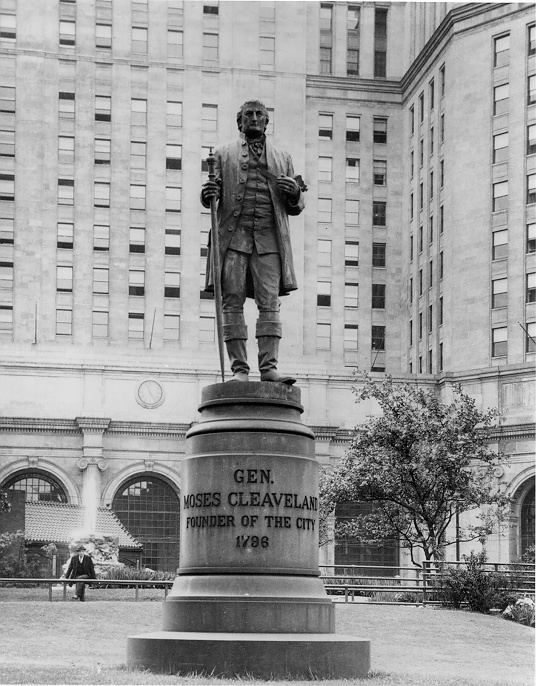
He accordingly had it surveyed into town lots, and the employees named the place Cleaveland, in honor of their chief. There were but four settlers the first year, and, on account of the insalubrity of the locality, the growth was at first slow, reaching 150 inhabitants only in 1820. Moses Cleaveland went home to Connecticut after the 1796 expedition and never returned to Ohio or the city that bears his name. He died in Canterbury, Connecticut, where he is also buried. Today, a statue of him stands on Public Square in Cleveland. The statue makes occasional appearances in popular media referencing Cleveland, including the movies Major League and Draft Day.
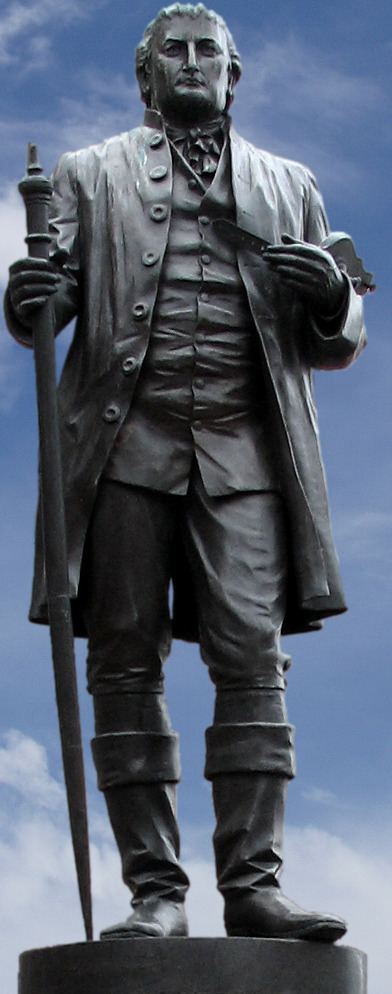
The place called "Cleaveland" eventually became known as "Cleveland". One explanation as to why the spelling changed is that, in 1830, when the first newspaper, the Cleveland Advertiser, was established, the editor discovered that the head-line was too long for the form, and accordingly left out the letter "a" in the first syllable of "Cleaveland", which spelling was at once adopted by the public. An alternative explanation is that Cleaveland's surveying party misspelled the name of the future town on their original map.
